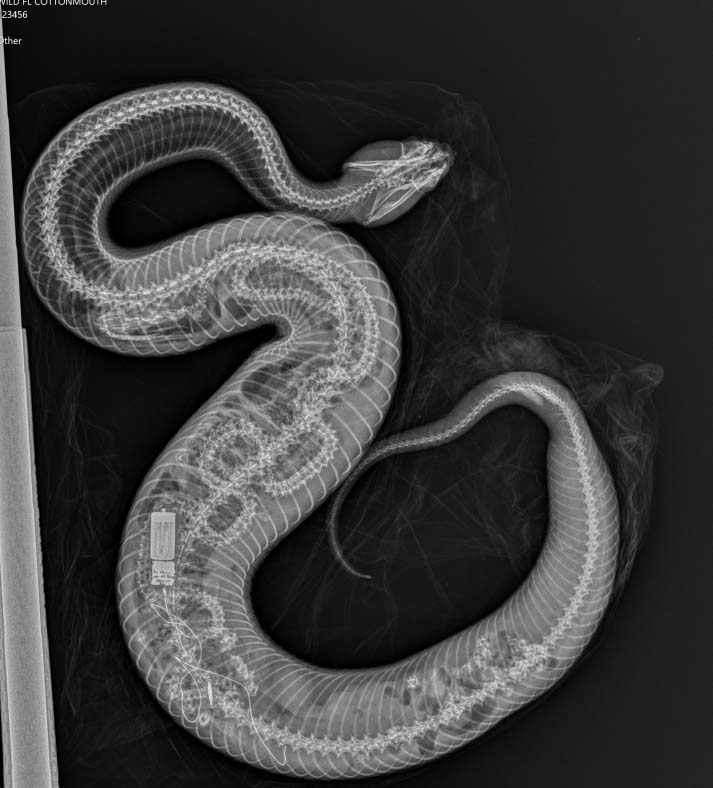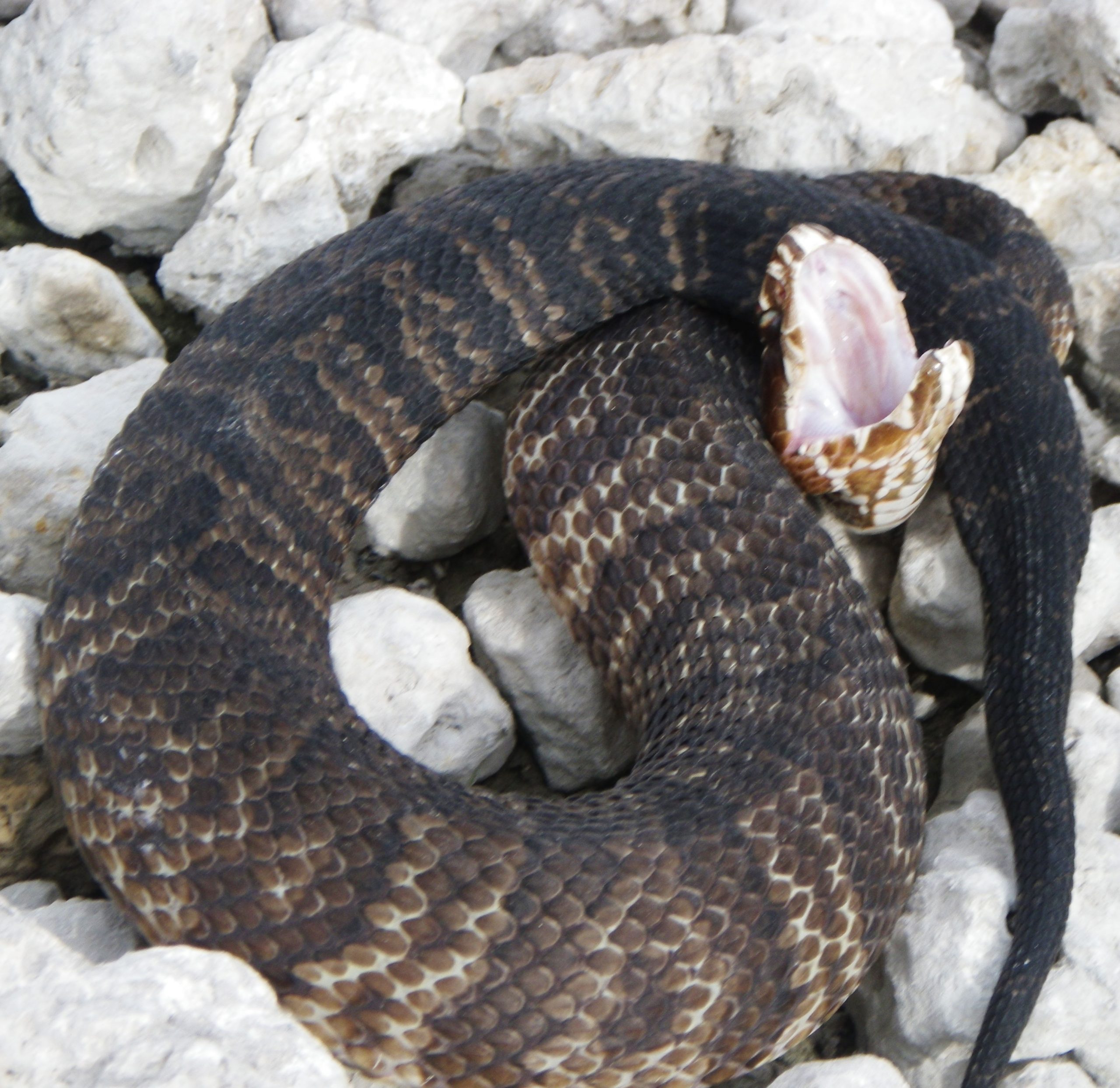A native species of snake in Florida bit back at an invasive Burmese python.
Researchers were able to learn of its fate thanks to a transmitter that had been implanted inside the python, Zoo Miami wrote on social media. X-ray photos of the native cottonmouth, also known as a water moccasin, showing the python’s spine and transmitter still inside the snake, were taken by the zoo.
A spokesperson for the zoo told the Washington Examiner the cottonmouth has since been released back into the wild.
WATCH: NATIONAL ZOO CELEBRATES PANDA CUB XIAO QU JI’S SECOND BIRTHDAY
The transmitter placed inside the python was intended to serve as part of the Invasive Species Program, meant to study how animals and wildlife act so researchers can learn more about how to care for animals. The program is run by the U.S. Fish and Wildlife Service and the U.S. Geological Survey agency, the zoo spokesperson explained.


A Burmese python can grow up to 19 feet long, according to ReptileHow.
CLICK HERE TO READ MORE FROM THE WASHINGTON EXAMINER
Cottonmouths can grow to up to 2 to 4 feet. In addition to other snakes, cottonmouths will also eat amphibians, lizards, small turtles, baby alligators, mammals, birds, and fish, according to the University of Georgia.

